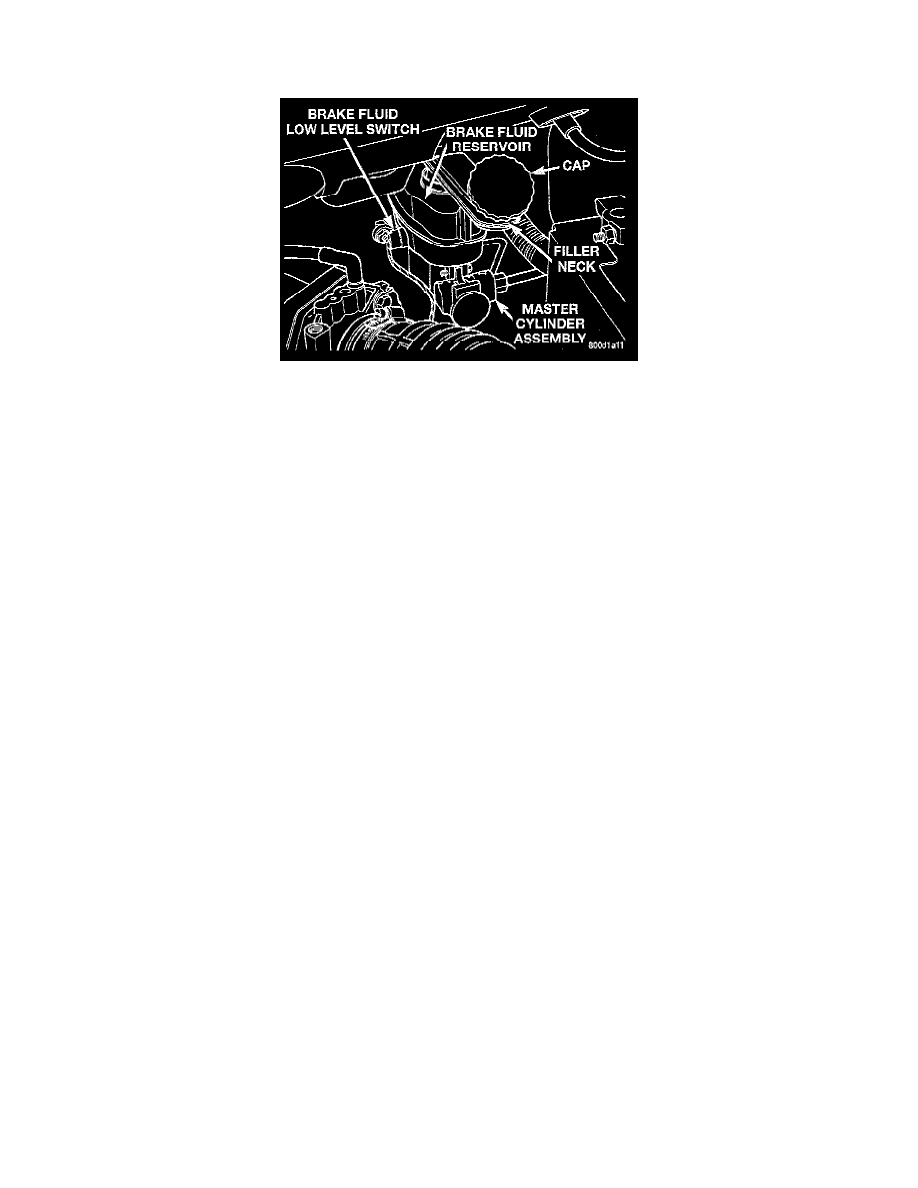Caravan FWD V6-201 3.3L VIN R MFI (1997)

Brake Master Cylinder: Description and Operation
With Antilock Brakes
Master Cylinder Assembly
GENERAL INFORMATION
This vehicle uses two different types of master cylinders, depending on ABS and traction control equipment.
The master cylinder is a standard tandem compensation port design for ABS and non ABS systems. Traction control vehicles use a dual center
port master cylinder. For proper traction control the standard master cylinder must not be used.
Both of the master cylinders used have a piston bore diameter of 23.8 mm. The master cylinder is not a repairable component and must be
replaced if found to be functioning improperly.
COMPONENTS
The brake system master cylinder assembly consists of several components. The body of the master cylinder is an anodized aluminum casting. It
has a machined bore to accept the master cylinder piston and threaded ports with seats for the hydraulic brake line connections. The brake fluid
reservoir of the master cylinder assembly is made of a transparent polypropylene type plastic.
A fluid level switch is located in the master cylinder fluid reservoir. The switch closes when a low fluid level is detected. The fluid level switch
turns on the brake warning lamp by grounding the lamp circuit. This switch does not disable the ABS system.
CAUTION: Do not hone the bore of the cylinder, as this will remove the anodized surface from the bore.
OPERATION
The master cylinder primary outlet port supplies hydraulic pressure to the right front and left rear brakes. The secondary outlet port supplies
hydraulic pressure to the left front and right rear brakes.
